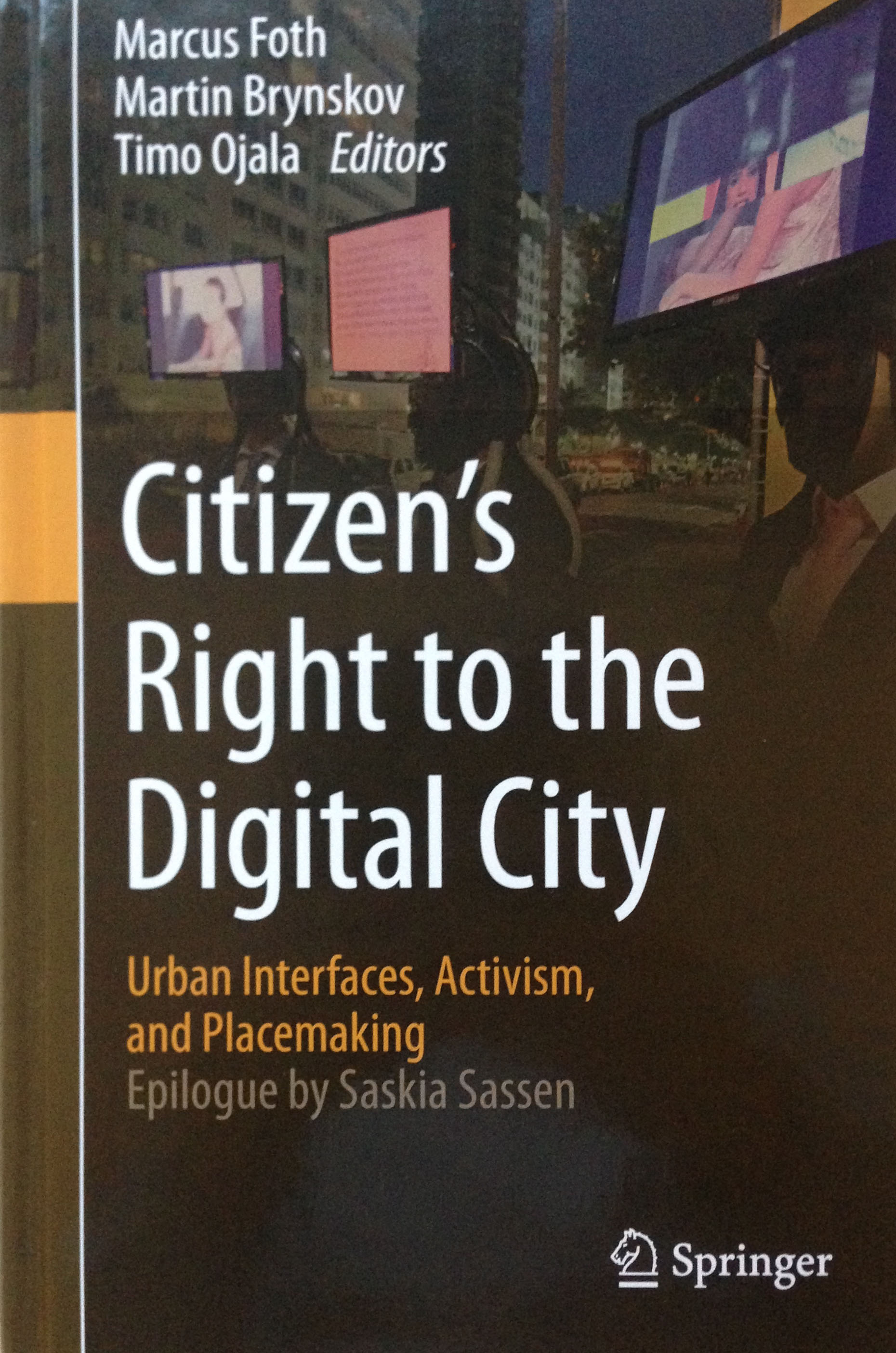Citizen’s Right to the Digital City: Urban Interfaces, Activism, and Placemaking
Marcus Foth, Martin Brynskov and Timo Ojala present their new book publication.



2016 presents two new book publishings in association with AU Smart Cities. The book presented here is Citizen’s Right to the Digital City: Urban Interfaces, Activism and Placemaking, which is a collective call for reclaiming the citizen’s right to the digital city edited by Martin Brynskov (AU), Marcus Foth (Queensland University of Technology) and Timo Ojala (University of Oulu).
The chapters in this book offer a variety of analyses of the unique and largely untapped qualities of the digital city, that we want the community of scholars interested in urban interaction design and urban informatics to further explore with us, such as their ability to reach a diversity of citizens, and the absence of automated personalization algorithms. They also offer complementary urban interfaces and civic media channels that may enable non-users of conventional social media to participate in different ways. Can city spaces help us burst the filter bubbles and break out of the echo chambers, and give us a voice?
The citizen’s right to the digital city recognizes the wealth of knowledge, wisdom, and experiences collectively and privately held by each urbanite. Similarly to the way in which, in 1992, Liam Bannon called for a profound shift in attention “from human factors to human actors” in systems development, more and more commentators these days critique the established hegemony of the engineering and technology-centric epistemology embedded in any one proprietary, smart-city vision. With this book, we want to contribute to the debate that has started to consider alternative approaches, focusing on “smart citizens,” and their not only vital, but crucial participation in the city-making enterprise.
People have advanced from being consumers to co-producers, from being stationary office workers to mobile urban nomads, from being passive members of the plebs to active instigators of change. Yet, interaction designers often still refer to them only as “users,” and architects and urban planners often refer to them only as “city residents” or “building occupants.” There is more to it. There is a need to focus on the “life between the systems,” with reference to Danish architect Jan Gehl’s pivotal 1971 book, “Life between buildings.” With this volume, we continue the Digital Cities series, expanding its repertoire, looking at urban interfaces, citizen action, and participatory city-making. We trust that the contributions to this book will continue the series that has been key in tracing key historic developments at the intersection of digital media and the built environment, from the information superhighway to the smart city.
The Digital Cities series started in 1999, and is the longest running academic workshop series that has rigorously followed the intertwined development of cities and digital technologies. Previous years have seen papers presented at Digital Cities appear as the basis of key anthologies that we list below. The works presented at the Digital Cities workshop series have also been formative for a diverse set of emerging fields, for example, urban informatics, smart cities, pervasive computing, internet of things, media architecture, urban interaction design, and – most recently – urban science.
Research contributions
-
Case studies and theoretical perspectives from thought leaders in urban informatics and urban interaction design.
Marcus Foth, Martin Brynskov and Timo Ojala (eds.) 2016. Citizen’s right to the digital city: Urban interfaces, activism, and placemaking. Springer, Singapore. ISBN 978-981-287-919-6.
